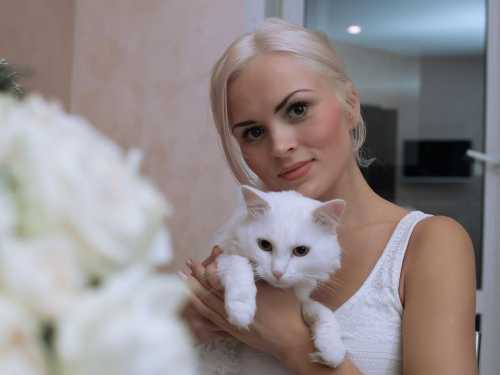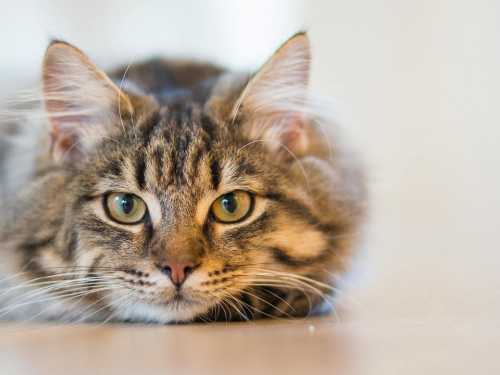
If you need to put your cat down on the floor, you should definitely put it on its paws. Until the cat's paws have touched a stable surface, you should not remove your hands from its body. This applies to cats of any age and breed.
Even if you are lazy, even if the cat tries to escape when there are only a few centimeters left to the floor. If your back doesn't allow you to bend over, you can put the cat on a sofa, chair, or windowsill, and then it will manage on its own.
It's all about trust.
The fear of losing support is an innate fear of all terrestrial mammals (and humans too). It is essential that the cat has the confidence that after being in your arms, it will be gently returned to the floor/ground.
In other words, you can't create moments for her when you show her fear of losing support.
Even if the cat had to fly just a little (in the human's opinion) from the hands to the floor, this is imprinted in its mind as the fact that it was abandoned, which is offensive and generates distrust.
In the future, the cat may begin to feel anxious when being held by its owner or by any person. If it is brushed regularly, it will stop going to its owner altogether.
Some people think this is nonsense. In fact, if you let a cat go even 20 cm from the floor, then upon landing it will freeze for a few seconds, twitch its tail and press its ears. At this moment, an expression of obvious displeasure will appear on its face. It will also look reproachfully and insultingly.
Of course, you shouldn't experiment like this. You can just recall a similar case. Unfortunately, some owners are unaware of this feature, so they regularly drop their cats, not realizing that the animal perceives it as contempt/punishment/disrespect.
Probability of injury
If you drop a cat when it is dozing or just purring relaxedly, warming itself on your lap, it can easily turn into not only psychological but also physical trauma for it.
Some will say: “But a cat is a great jumper and can flip in the air so that it lands on its feet.” This is not entirely true.
When a cat jumps on its own, it's a different matter. It prepares for it, takes aim, chooses a place to jump, and groups itself correctly.
A sleepy, relaxed cat will not have time to regroup properly, so it risks landing on the wrong paws.
In addition, it takes a cat time to turn over in the air, and if it falls from a small height (say, from its knees – that's about half a meter), it won't have time to do it!
At the same time, if you compare a half-meter height to the size of a cat's body, it's about the same as a person falling off a table. Not to mention the consequences.





